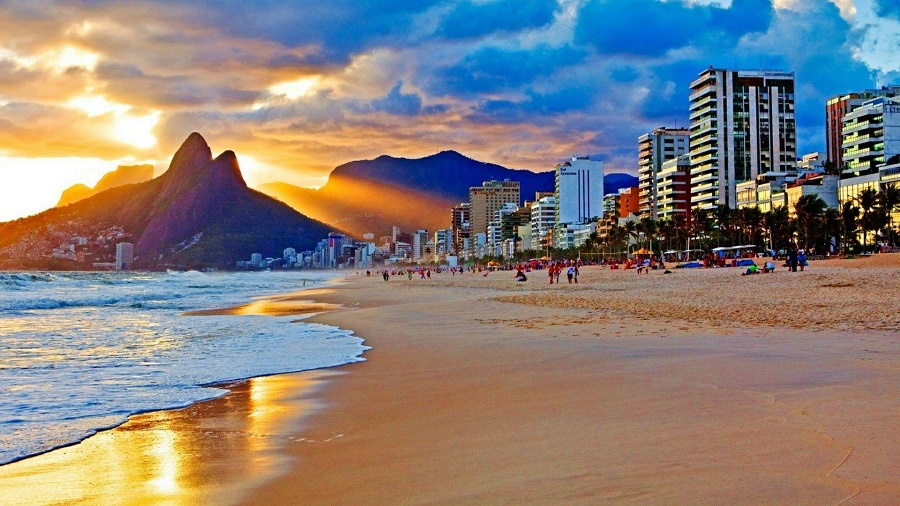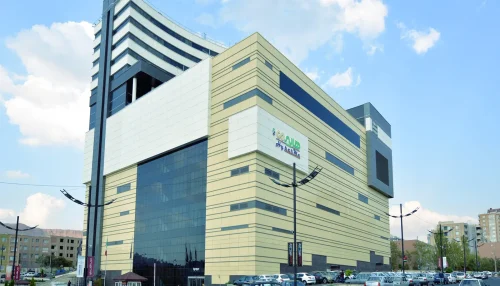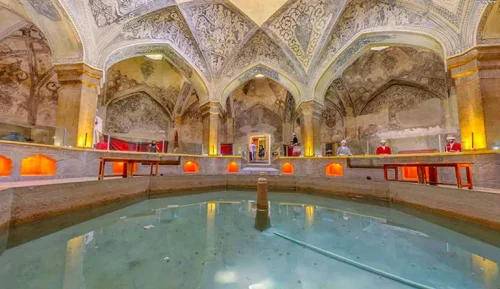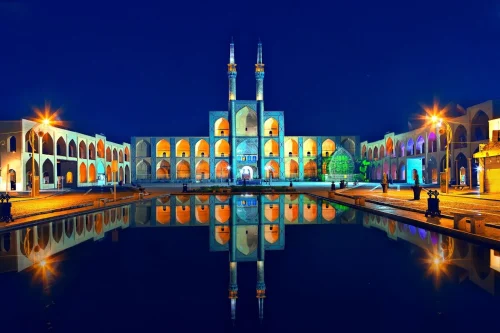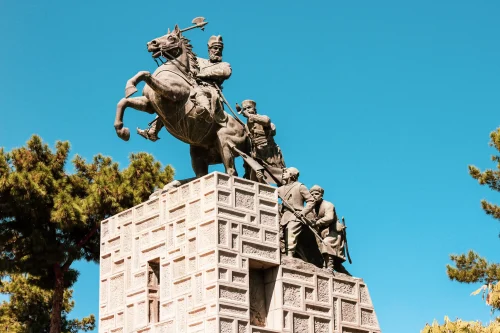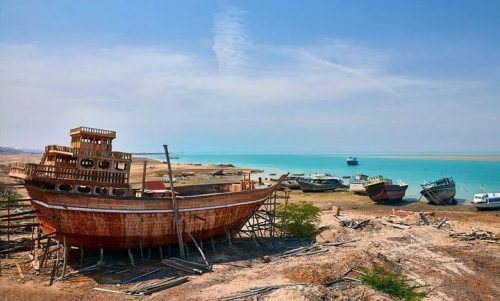The Cathedral of San Sebastián in Rio de Janeiro: 10 Fascinating Facts
The Cathedral of San Sebastián in Rio de Janeiro is one of the city’s most prominent attractions, drawing thousands of tourists each year. With its unique design, the church combines modern architecture with inspiration from Mayan culture. In this article, we explore 10 fascinating facts about the Cathedral of San Sebastián in Rio de Janeiro.
One of the most interesting facts is the crypts located in the church’s basement, housing a museum of artistic and historical artifacts. Additionally, the cathedral features four stained glass windows, each symbolizing different aspects of the Christian faith, creating a spiritual and tranquil atmosphere for visitors.
The Cathedral of San Sebastián in Rio de Janeiro boasts immense dimensions, securing its place among the world’s largest cathedrals. Furthermore, its design, by Brazilian architect Edgar de Oliveira da Fonseca, exemplifies modernity alongside traditional art, inspiring many modern architects. The cathedral’s dedication to San Sebastián, the patron saint of Rio de Janeiro, further enhances its spiritual value.
The Cathedral of San Sebastián is a sacred site for locals and travelers alike, with a rich history documented through numerous narratives. It serves not only as a center of worship but also as a cultural hub, playing a significant role in preserving and promoting art and architecture in Rio de Janeiro.
The cathedral, with its natural light and stained glass, creates an enchanting and beautiful environment that captivates every visitor. The design of the stained glass windows results in stunning and unique light displays inside the church, making the experience memorable for everyone.
To book your trip to Rio de Janeiro and visit this magnificent cathedral, you can do so via the Irancharter website (Irancharter.ir) or by calling 02191091190.
Irancharter, an online flight booking service provider, offers a wide range of services, making your journey a pleasurable experience.
The Unique Architecture of the Cathedral of St. Sebastian in Rio de Janeiro
The Cathedral of St. Sebastian in Rio de Janeiro is considered one of Brazil’s most outstanding architectural masterpieces due to its unique design. Combining modern style with inspiration from Mayan architecture, this cathedral boasts a stunning and distinctive appearance. Its conical structure not only symbolizes grandeur and majesty but also represents the architect’s endeavor to create a spiritual and peaceful space for visitors.
The Historical Significance of the Cathedral of St. Sebastian in Rio
The Cathedral of St. Sebastian is not only a religious site but also a bearer of the history and culture of Rio de Janeiro. Over the years, it has played a significant role in historical events and serves as a venue for cultural and religious gatherings for locals and tourists. The cathedral’s basement houses crypts featuring a museum of art and historical artifacts, significantly enhancing its historical value.
Stained Glass and Light Play in the Cathedral of St. Sebastian
One of the most notable features of the Cathedral of St. Sebastian is its stained glass windows. These windows, with their diverse colors and special lighting, create a spiritual and tranquil atmosphere inside the cathedral. Each of these glasses symbolizes different aspects of Christian faith, and their play of light throughout the day offers visitors a unique visual experience.
Museum Crypts in the Basement of the Cathedral of St. Sebastian
Beneath the main altar of the Cathedral of St. Sebastian are crypts that serve as a museum of art and history. This collection showcases the social, political, and religious history of Rio de Janeiro, featuring prominent pieces such as the baptismal font, King Dom Pedro II’s throne, and the Golden Rose. Visiting these crypts provides access to historical and artistic treasures for enthusiasts.
Dedication of the Cathedral of St. Sebastian in Honor of the Renowned Saint
This cathedral is named in honor of St. Sebastian, a Christian saint and the primary patron of Rio de Janeiro. During the persecution of Christians, St. Sebastian exhibited courage and faith, becoming a symbol of steadfastness and belief. Naming the cathedral after this saint adds to its spiritual and historical significance and establishes a strong connection with the religious values of the community.
The Large Dimensions and Capacity of the Cathedral of St. Sebastian
The Cathedral of St. Sebastian stands out among the world’s largest cathedrals due to its massive dimensions. Its interior diameter is 96 meters, the exterior diameter is 106 meters, and the cathedral’s height reaches 75 meters. The interior space spans 8,000 square meters, accommodating 20,000 standing visitors and 5,000 seated ones. These dimensions allow for hosting large ceremonies and attracting numerous tourists.
Inspiration from Mayan Architecture in the Design of the Cathedral
Brazilian architect Edgar de Oliveira da Fonseca drew inspiration from Mayan pyramid architecture to create a unique design for the Cathedral of St. Sebastian. Unlike many traditional churches built in the Gothic style with pointed towers, this cathedral features a conical and simple design, embodying modern and distinctive grandeur. This blend of architectural styles transforms the cathedral into a remarkable piece of art and architecture.
Recapping the Construction History and Introduction of the Cathedral of St. Sebastian
Construction of the Cathedral of St. Sebastian began in 1964 and was officially consecrated in 1976. The first stone of this cathedral was laid by Pope Paul VI, and in 1972, the first Holy Mass was held there. Over the years, this cathedral has become a symbol of Christian faith and modern art and continues to host various religious and cultural ceremonies.
Location and Accessibility to the Cathedral of St. Sebastian
The Cathedral of St. Sebastian is located in the heart of Rio de Janeiro, near many of the city’s famous attractions such as the Museum of Modern Art and the Memorial Sculpture for the Victims of World War II. This central location provides easy access to the cathedral for tourists and locals alike, making it a popular spot.
The Impact of the Cathedral of St. Sebastian on Rio de Janeiro’s Tourism
The Cathedral of St. Sebastian, as one of Rio de Janeiro’s main tourism attractions, plays a vital role in attracting both international and domestic tourists. Its unique design, spiritual atmosphere, and museum crypts offer visitors an unparalleled experience. This cathedral not only serves as a religious site but also adds cultural and historical value to the city’s tourism industry.
Frequently Asked Questions
- When was the Cathedral of St. Sebastian built?
- Construction of the Cathedral of St. Sebastian began in 1964 and it was officially inaugurated in 1979.
- What is the architecture style of the Cathedral of St. Sebastian?
- The architecture of the cathedral is a blend of modern style inspired by Mayan pyramid architecture, showcasing a unique conical design.
- What are the dimensions of the Cathedral of St. Sebastian?
- The cathedral’s interior diameter is 96 meters, the exterior diameter is 106 meters, and its height reaches 75 meters. The interior space is 8,000 square meters.
- Where is the Cathedral of St. Sebastian located in Rio de Janeiro?
- The cathedral is located in the heart of Rio de Janeiro, close to the Museum of Modern Art and the Memorial Sculpture for the Victims of World War II.
- What are the notable features of the Cathedral of St. Sebastian?
- Notable features include beautiful stained-glass windows, a unique conical design, and a bronze statue of Pope John Paul II.
- What events occur at the Cathedral of St. Sebastian?
- The cathedral hosts religious ceremonies such as Holy Mass, celebrations, and various cultural events.
- Does the Cathedral of St. Sebastian have a museum?
- Yes, under the main altar, there is a crypt acting as a museum displaying art and historical documents related to the Catholic Church.
- Who was the architect of the Cathedral of St. Sebastian?
- The architect was Edgar de Oliveira da Fonseca, a prominent Brazilian architect known for his modern design.
- Why is the cathedral named after St. Sebastian?
- The cathedral is named in honor of St. Sebastian, a Christian saint and patron of the city of Rio de Janeiro.
- What other tourist attractions are near the Cathedral of St. Sebastian?
- Nearby attractions include the Museum of Modern Art, Tijuca National Park, and famous beaches like Copacabana.
- How can the Cathedral of St. Sebastian be accessed?
- The cathedral is easily accessible via public transport including metro and city buses.
- Was the Cathedral of St. Sebastian built during a specific historical period?
- The cathedral was constructed in the modern era to replace the old cathedral of Rio.
- What was the cost of building the cathedral?
- The construction cost of the Cathedral of St. Sebastian is estimated to be around 20 million Brazilian Real.
- What significance does the Cathedral of St. Sebastian hold in the Rio community?
- The cathedral is not only an important religious site but also recognized as a prominent architectural landmark and major tourist attraction in the city.
- Does this cathedral participate in festivals and specific ceremonies?
- Yes, the Cathedral of St. Sebastian hosts numerous religious, festive, and cultural events that form an integral part of the city’s social life.
- Are there interesting stories about the Cathedral of St. Sebastian?
- Yes, one interesting story involves the hidden cross in the architecture and the unique attention to light and colors in its interior design.
- In what architectural style is the Cathedral of St. Sebastian built?
- The cathedral is built in a modern architectural style inspired by Mayan pyramids.
- What facilities are available next to the Cathedral of St. Sebastian?
- Adjacent to the cathedral, there is a sacred museum with a collection of relevant art and religious artifacts accessible to visitors.
- When is the Cathedral of St. Sebastian open for visits?
- The cathedral is open for visits every day from 10 AM to 6 PM.

